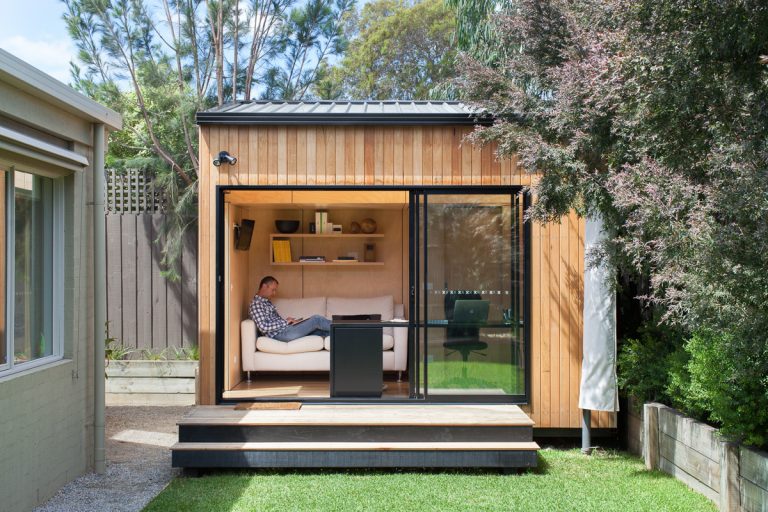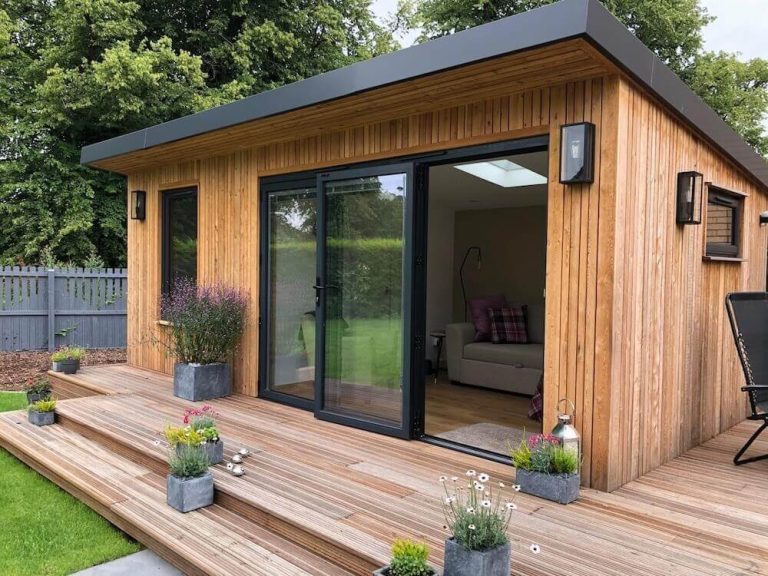Cost
Garden Rooms:
One of the most significant advantages of garden rooms is their cost-effectiveness. On average, garden rooms tend to be less expensive than traditional home extensions. The cost of a garden room can vary widely depending on size, materials, and additional features, but generally, you can expect to spend between £10,000 and £30,000. This cost often includes the structure itself, insulation, electrics, and basic interior finishes.
Garden rooms are usually considered a separate entity from the main house, which means they might not require the same level of foundational work or structural integration, further reducing expenses. Additionally, garden rooms are often exempt from VAT, providing further financial benefits.
Home Extensions:
Home extensions, on the other hand, are typically more expensive. The cost can range from £30,000 to £100,000 or more, depending on the scope of the project. Extensions involve more complex construction work, such as integrating new foundations with existing ones, making structural modifications, and ensuring seamless integration with the existing building’s utilities and finishes.
Furthermore, home extensions usually attract VAT and may also incur additional costs related to planning permissions, architectural designs, and building regulations. These added expenses can significantly increase the overall cost of the project.
Time
Garden Rooms:
In terms of installation time, garden rooms have a clear advantage. Most garden rooms can be designed, built, and installed within a few weeks to a couple of months. This swift turnaround is possible because garden rooms are often prefabricated or built using modular construction methods, which significantly reduces on-site construction time.
Home Extensions:
Building a traditional home extension is a much lengthier process. Depending on the complexity of the project, it can take several months to a year or more to complete. The process typically involves multiple stages, including planning, design, obtaining permits, and construction. Delays are also more common with home extensions due to weather conditions, supply chain issues, or unforeseen structural challenges.
Disruption to Daily Life
Garden Rooms:
One of the most appealing aspects of garden rooms is the minimal disruption they cause to daily life. Since garden rooms are constructed separately from the main house, the building process doesn’t interfere significantly with your home’s daily activities. There might be some noise and movement in the garden area, but the main living space remains unaffected.
Home Extensions:
Home extensions, conversely, can be highly disruptive. Construction work typically occurs in and around the existing home, leading to noise, dust, and restricted access to certain areas. Depending on the extent of the work, you might have to deal with temporary relocations of kitchens, bathrooms, or living spaces. This disruption can be stressful, especially for families or individuals working from home.
Flexibility
Garden Rooms:
Garden rooms offer remarkable flexibility in terms of design and use. They can be customized to serve a variety of purposes, such as a home office, gym, art studio, guest room, or even a private retreat. The separation from the main house allows for unique design choices that might not blend well with the existing architecture.
Moreover, garden rooms can be relocated or removed with relative ease, making them a versatile investment. Should your needs change in the future, a garden room can be repurposed or even sold separately.
Home Extensions:
Home extensions, while more permanent, also provide a high degree of flexibility but in a different way. They allow for a seamless expansion of existing living spaces, such as extending a kitchen, adding a new bedroom, or creating an open-plan living area. Extensions are integrated into the existing home, maintaining a cohesive design and flow.
However, once built, home extensions are permanent structures. While they add substantial value to the property, they do not offer the same level of adaptability as garden rooms.
Planning Permissions and Regulations
Garden Rooms:
One of the advantages of garden rooms is the relative simplicity of the planning process. Many garden rooms fall under permitted development rights, meaning they do not require formal planning permission, provided they meet certain criteria (such as not exceeding a specific height or footprint). This can significantly streamline the process and reduce bureaucratic hurdles.
Home Extensions:
Home extensions typically require planning permission and must adhere to strict building regulations. This process can be time-consuming and may involve several stages of approval. Engaging with architects, planning officers, and building inspectors is often necessary to ensure compliance with local regulations.
Environmental Impact
Garden Rooms:
Garden rooms can be designed with sustainability in mind, incorporating eco-friendly materials, energy-efficient insulation, and even renewable energy sources like solar panels. Their smaller footprint and off-site construction methods often result in a lower environmental impact compared to traditional building techniques.
Home Extensions:
While home extensions can also be built sustainably, the larger scale of construction often results in a higher environmental impact. However, this can be mitigated by using sustainable materials, energy-efficient designs, and incorporating green technologies. The key is to plan and design with sustainability as a core principle.
Value Addition
Garden Rooms:
Adding a garden room can enhance the value of your property, especially if it is designed to a high standard and serves a useful purpose. Buyers often appreciate the added flexibility and the potential for additional living or working space, making it an attractive feature.
Home Extensions:
Home extensions typically add more significant value to a property compared to garden rooms. By increasing the square footage and improving the functionality of the home, extensions can boost market value substantially. This is particularly true if the extension enhances key areas of the home, such as the kitchen or living room.
Garden Rooms vs. Home Extensions: which is better and why?
Deciding between a garden room and a home extension depends on your specific needs, budget, and long-term goals. Garden rooms offer a cost-effective, flexible, and quick solution with minimal disruption to daily life, making them ideal for those looking to add versatile space without major construction work. Home extensions, while more expensive and time-consuming, provide a permanent increase in living space and property value, seamlessly integrating with the existing home.
Carefully consider the advantages and challenges of each option to determine which best aligns with your lifestyle and future plans. Whether you choose the charm and flexibility of a garden room or the substantial investment of a home extension, both options can significantly enhance your living experience and property value.







